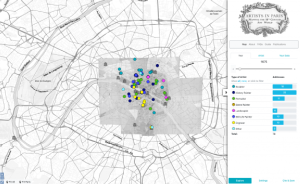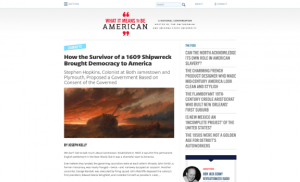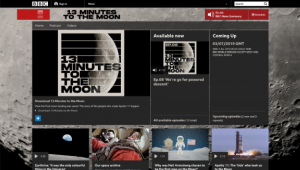General Interest
Back to Top
|
 |
|
Encyclopedia of Life: Learning + Education
|
Science |
|
Science teachers at both the elementary and secondary levels may appreciate this collection of learning and education resources from the Encyclopedia of Life (EOL). This project offers a variety of resources geared toward learning about wildlife, plants, and biodiversity. For example, biodiversity cards offer visitors "a fun way to share and learn about the traits or characteristics of organisms," and EOL provides pre-made cards as well as tutorials and tools to make your own as a classroom project. Biodiversity cards can also be incorporated into EOL's numerous lesson plans, which are aligned with NGSS standards and organized by grade level for students from grades 2-12. These lessons are built around themes such as classification, science skills, and energy flow. Teachers may also be interested in EOL's educational podcasts, each episode of which is about five minutes long and features an interview with a scientist about one species. Finally, to help situate biodiversity in its geographical context, EOL also provides several Google Earth video tours (accompanied by downloadable KMZ files) on topics such as Arctic tern migrations and invasive marine algae. [JDC] |
|





|
|
 |
|
CIDRAP: Antimicrobial Stewardship Project
|
Science |
|
The discovery and development of antibiotics were revolutionary for modern medicine. However, with their increased use concerns about antimicrobial resistance and "superbugs" also emerged. The Antimicrobial Stewardship Project (ASP) aims to help society navigate this by "offer[ing] freely available, high-quality information and educational resources on antimicrobial stewardship practice, research, and policy." This initiative from the University of Minnesota's Center for Infectious Disease Research and Policy (CIDRAP), which was featured in the 4-12-2019 Scout Report, offers a wide range of approachable online content designed for policymakers, health professionals, and the general public alike. Here, visitors will find recent news articles and policy updates, as well as a podcast and webinars. Instructors may want to check out the Educational Multimedia section, which features an extensive collection of citizen science projects, online games, videos, infographics, and more. In addition, this section includes many workbooks and toolkits for medical professionals, who may also be interested in ASP's Clinical Tools and Bibliography sections. CIDRAP was founded in 2001 and is directed by Dr. Michael T. Osterholm. [JDC] |
|





|
|
 |
|
The Learning Scientists
|
Social studies |
|
Educators, students, and anyone interested in the psychology of how we learn may want to check out the Learning Scientists. This resource is created by a team of cognitive psychology researchers and aims to "make scientific research on learning more accessible to students, teachers, and other educators." Visitors may want to begin by reading the website's FAQ page to find quick information on the different strategies for effective studying and teaching, with links to the project's related blog posts for more in-depth explanations. Those who prefer visual guides will find posters and PowerPoint slides illustrating six distinct learning strategies under Downloadable Materials. The site also offers 7 videos and a podcast series with more than 40 episodes, as of this write-up. The Learning Scientists was co-founded in 2016 by Megan Sumeracki, an assistant professor of psychology at Rhode Island College, and Yana Weinstein-Jones, who at the time was an assistant professor of psychology at the University of Massachusetts-Lowell. This project has received funding from organizations such as the Wellcome Trust and the higher education nonprofit IDEA, as well as support from individual donors. [JDC] |
|





|
|
 |
|
Artists in Paris: Mapping the 18th-Century Art World
|
|
|
Artists in Paris is an open-access digital humanities and art history project that maps hundreds of 18th-century artists' homes and studios. This website's database contains an entry for 471 artists. All of these artists were "members of the French Royal Academy of Painting and Sculpture (Academie Royale de Peinture et de Sculpture) between 1675 (when comprehensive address records began) and 1793 (when the Academy was disbanded during the French Revolution)." While it's possible to search by artist name, drawing on personal knowledge of French 18th-century painters and sculptors, there is a handy Guide section that explains how to get the most out of the resource. Perhaps the easiest way to start using Artists in Paris is to filter by year, which produces color-coded markers on the map indicating addresses where artists lived. The color of the marker indicates the type of artist, such as history painter, engraver, or landscapist. Clicking on the markers displays information about the corresponding artist. For example, when filtering for 1778 there are 10 green markers indicating portrait painters, including Alexandre Roslin (1718-1793), who lived at four different addresses in Paris during his career. The principal investigator of the project is Hannah Williams, and the website was built by Chris Sparks. [DS] |
|





|
|
 |
|
YouTube: American Sign Language University
|
Language Arts |
|
For readers interested in learning American Sign Language (ASL), the YouTube channel of American Sign Language University (ASLU) is a wonderful free resource. Launched in 2007, this channel is run by Dr. Bill Vicars, who has taught ASL for over 20 years and is a professor of deaf studies at California State University, Sacramento. Here, visitors will find dozens of videos featuring Vicars teaching ASL lessons to one of his students, allowing viewers to learn along with the student. 60 of these lessons are organized into 4 playlists comprising a sequential curriculum designed for beginning ASL learners. Other more advanced playlists focus on medical sign language and ASL linguistics. There are also numerous individual videos demonstrating, for example, fingerspelling, jokes, and law-related ASL. Vicars, who was born deaf and is immersed in the Deaf community, intends his channel to be a "[r]esource site for ASL students, teachers, interpreters, and parents of Deaf children," and it acts as an extension of ASLU's main website, Lifeprint.com (see the 7-14-2006 Scout Report). New videos are often added to the channel, making it well worth repeat visits. [JDC] |
|





|
|



















